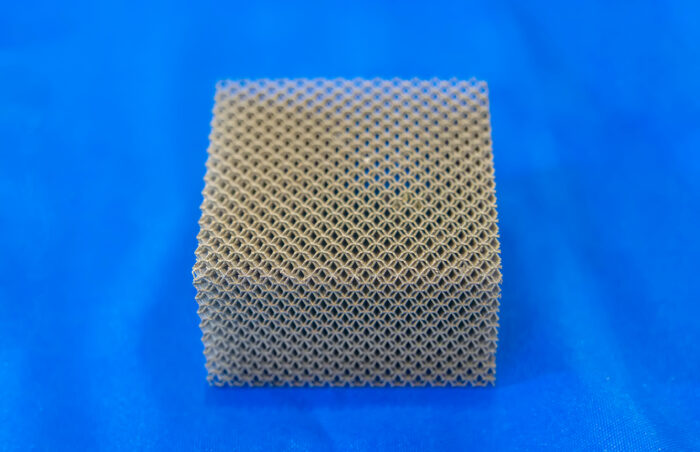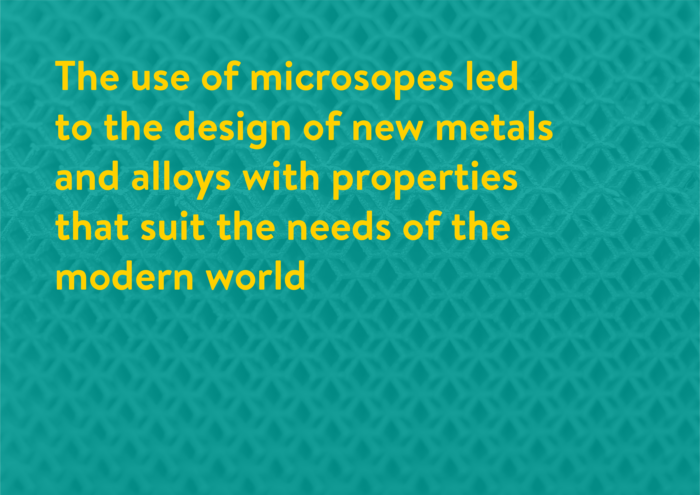This website uses cookies so that we can provide you with the best user experience possible. Cookie information is stored in your browser and performs functions such as recognising you when you return to our website and helping our team to understand which sections of the website you find most interesting and useful.

A new microworld: revealing the magic
Metals: Pioneering Materials
Light microscopes, as we know them today, were developed between the 1500s and 1800s – born as a product of human curiosity and the desire to understand the world around us at a deeper level.
Microscopes enabled scientists to understand the properties of different materials at the microscopic level. For the first time, microscopes showed us that metals are made of tiny crystals, called ‘grains’. The shapes and structures of these grains would change depending on the composition and the process by which they had been made.

The crystal structures of metals are formed by individual rows of atoms arranged into 3D structures containing long-range repeating patterns

The invention of the electron microscope in the 1930s further improved our understanding of materials, allowing us to observe them at higher magnifications than under light microscopes. More recently, electron microscopes have allowed us to see the individual rows of atoms in metals, and how they arrange into 3D structures that have a long-range repeating pattern in space – i.e. crystal structures. The microscopic crystal structures of different metals could finally be seen and analysed by humans.
This microscopic understanding led us to design new metals and alloys with specific properties that suit the needs of the modern world. For thousands of years, humanity used only a few major metals – in the last fifty years, thousands of different metals and alloys have been discovered for us to use for different applications.

